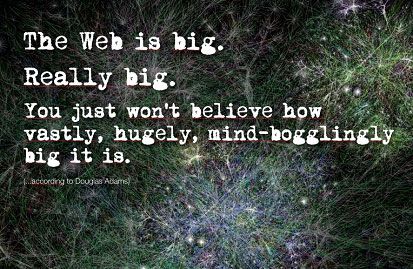
The Web has become an object of our daily life and the amount of information in the web is ever growing. Besides plain texts, especially multimedia information such as graphics, audio or video has become a predominant part within the web's information traffic. But, how to find some useful information within this huge information space? Traditional search engines will come to the limits of their powers, when it comes to understanding information content. The Semantic Web is an extension of the traditional web in the sense that the information implicitly contained in natural language text is complemented by explicit semantics based on formal knowledge representation. In this course, you will learn the fundamentals of Semantic Web technologies. You will learn how to represent knowledge and how to access and benefit from semantic data on the Web.
Language: English
Course information
The Web has become an object of our daily life and the amount of information in the web is ever growing. Besides plain texts, especially multimedia information such as graphics, audio or video have become a predominant part of the web's information traffic. But, how can we find useful information within this huge information space? Traditional search engines will reach the limits of their power, when it comes to understanding information content. The Semantic Web is an extension of the traditional web in the sense that information in the form of natural language text in the web will be complemented by its explicit semantics based on a formal knowledge representation. Thus, the meaning of information expressed in natural language can be accessed in an automated way and interpreted correctly, i.e. it can be understood by machines.
Semantic Web technologies enable the explicit representation of knowledge and its further processing to deduce new knowledge from implicitly hidden knowledge. Thus, information access and information search will be more precise and more complete compared to today's traditional information retrieval technology. Previously heterogeneous data can be mapped and combined based on common knowledge representation and schemata easily extended in a dynamic way.
In this course, you will learn the fundamentals of Semantic Web technologies. You will learn how to represent knowledge and how to access and benefit from semantic data on the Web.
You'll find additional video lecturing material on www.tele-task.de.
Attention: This course is currently in self-study mode, in which you do not have access to graded assignments/exams. Therefore, we can only issue you a certificate of participation.
Course contents
Week 1:
Introduction to the Semantic WebWeek 2:
Identifying Things with URI and RDFWeek 3:
Querying RDF(S) with SPARQLExcursus:
Semantic (Meta) Data and the WebWeek 4:
Knowledge Representation IWeek 5:
Knowledge Representation IIWeek 6:
Applications in the Web of Data
Enroll me for this course
Learners
Rating
This course was rated with 4.0 stars in average from 7 votes.
Certificate Requirements
- Gain a Record of Achievement by earning at least 50% of the maximum number of points from all graded assignments.
- Gain a Confirmation of Participation by completing at least 50% of the course material.
Find out more in the certificate guidelines.
This course is offered by

Harald Sack is Professor for Information Services Engineering at FIZ Karlsruhe - Leibniz Institute for Information Infrastructure and Karlsruhe Institute of Technology. After graduating in computer science at the University of the Federal Forces Munich Campus in 1990, he worked as systems/network engineer and project manager in the signal intelligence corps of the German federal forces from 1990–1997. In 1997 he became an associated member of the graduate program ‘mathematical optimization’ at the University of Trier, where he obtained a PhD in Computer Science in 2002. From 2002–2009 worked as PostDoc at the Friedrich-Schiller-University in Jena. From 2009 - 2016 he worked as Senior Researcher and head of the research group 'semantic technologies’ at the Hasso Plattner-Institute for IT-Systems Engineering (HPI) at the University of Potsdam.
His areas of research include semantic technologies, knowledge graphs and knowledge representations, ontological engineering, knowledge extraction, machine learning, semantic & explorative search.
He is charter member and general secretary of the 2008 founded German IPv6 Council. He has served as Senior PC member or PC member of numerous international conferences and workshops related to semantic technologies as well as program chair, scientific chair or general chair.
Harald Sack has published more than 200 papers in international journals and conferences including three standard textbooks on networking technologies. He is co-founder of yovisto GmbH (www.yovisto.com).